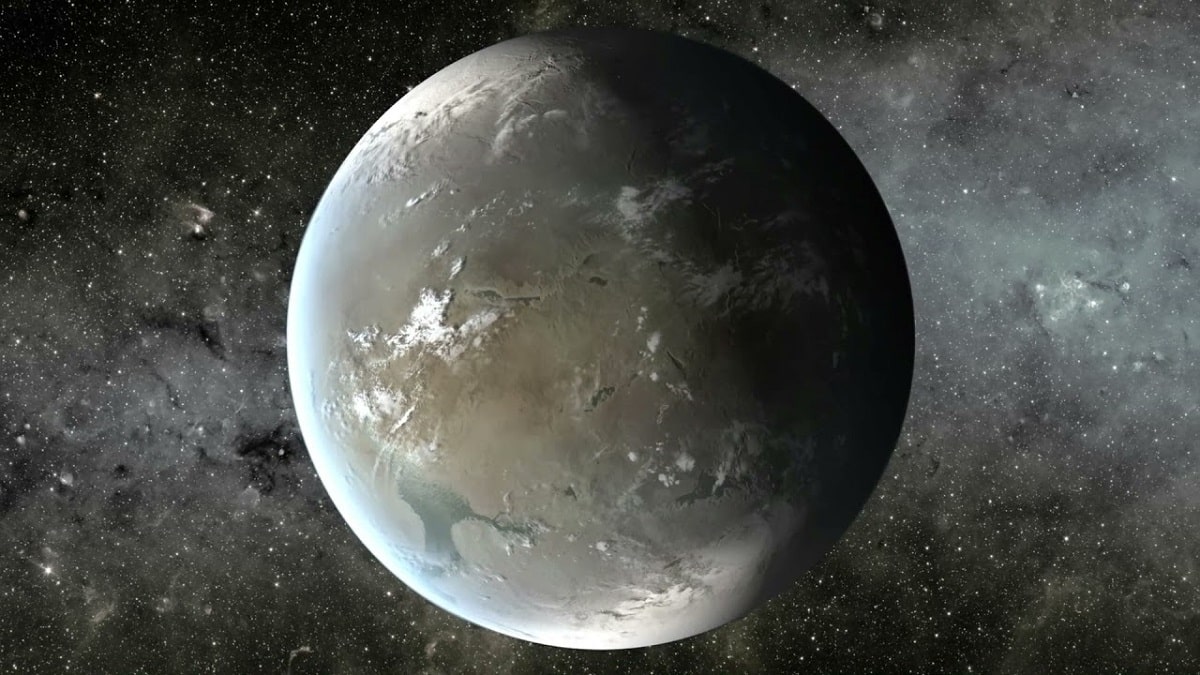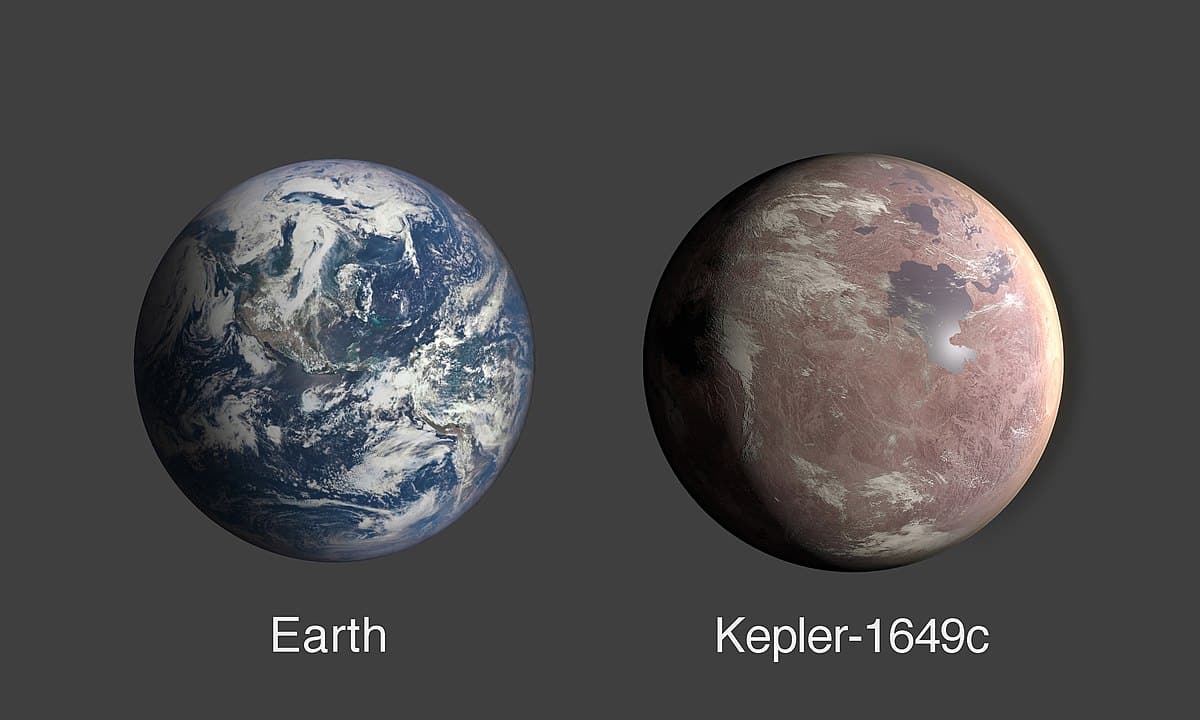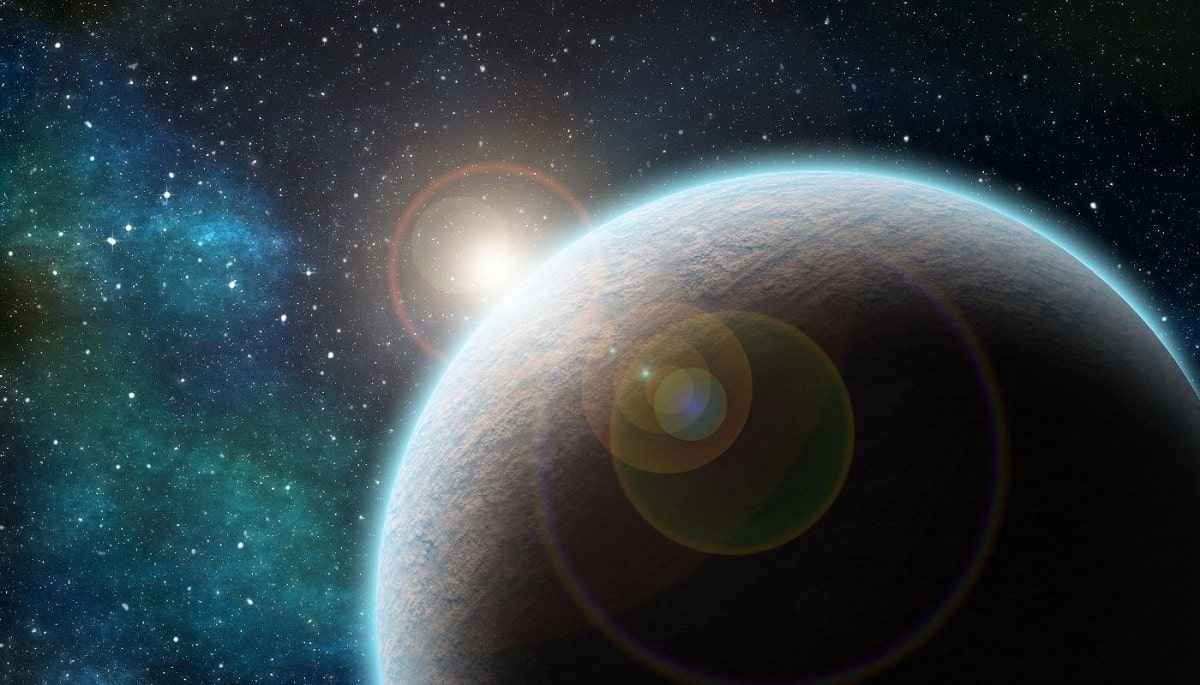
Science does not stop trying to find a planet that has similar characteristics to planet earth. The main goal is to find a planet that is potentially habitable. In this case, in the year 2018 the planet was discovered Kepler 1649c. It is a planet that has conditions very similar to those of our planet and can become habitable.
In this article we are going to tell you about the characteristics and discoveries that have been made of the exoplanet Kepler 1649c.
exoplanet Kepler 1649c

The Kepler Space Telescope stopped working in November 2018, but data provided by the observatory continues to be scrutinized by the scientific community, with observations uncovering hidden gems from time to time. The latest surprise is Kepler-1649c, an exoplanet in its star's habitable zone. At this point, when we know of more than 4.200 exoplanets, many of which are in the habitable zone, we can ask ourselves: What is so special about Kepler-1649c? Well, the first is its size. Kepler-1649c is 1,06 times the diameter of Earth. In other words, it is a terrestrial planet in the habitable zone. Its star is an M-type red dwarf with only 20% the mass of the Sun, so the habitable zone of the system is very close to the star.
In fact, the orbital period of Kepler-1649c is only 19,5 days (about 15 million kilometers). Despite orbiting so close, it has an equilibrium temperature of around 234 Kelvin and accounts for 74% of the energy flux Earth receives from the Sun. Furthermore, it is "only" 300 light-years away, compared to Earth. most of the planets discovered by Kepler.
Again, it must be emphasized that Kepler-1649c was discovered via the transit method, so we only know its size and orbital period. The fact that it is in the habitable zone does not mean that it has water on its surface, since the presence of liquid oxides in an object depends on many unknown parameters (density and atmospheric composition, period of rotation, inclination of the axis, internal activity, etc.). As its lettering indicates, Kepler-1649c is the second planet discovered in the Kepler-1649 system, after Kepler-1649b, an 8,7-day-Earth-sized planet whose existence was previously confirmed. Therefore, therefore, it is an exovenus.
Location of the exoplanet Kepler 1649c

The orbits of Kepler-1649b and Kepler-1649c are in 9:4 resonance, but this resonance is very weak, so there may be a third planet in the system that has not yet been discovered, located between the two discovered planets, and both worlds are related to this hypothetical planet is in a 3:2 resonance. Since there are no signs of this third planet in the Kepler data, it means that it is smaller than Mars or that its orbital plane has a different inclination and cannot transit the sun as seen from Earth.
Anyway, what is really interesting about Kepler-1649c is that it was discovered this year by analyzing data from the Kepler main mission obtained between 2010 and 2013. In 2014, a possible exoplanet candidate or KOI (Kepler Object of Interest) was detected. Kepler) around the star named KOI 3138.01. Subsequent analysis of this candidate planet's light curve using specific software called Robovetter confirmed in 2017 that it was, in fact, a real planet and was named Kepler-1649b. However, Robovetter ruled out another possible exoplanet candidate, KOI 3138.02, as a false positive.. A new study of KOI 3138.02 by a team of astronomers led by Andrew Vanderburg shows that it is a real planet after all: Kepler-1649c. It's all because the light curve of KOI 3138.02 caught the attention of people who were visually analyzing the Kepler data. This means that, on the one hand, objects rejected as false positives can still hide quite a few real exoplanets and, on the other hand, human visual inspection is still of great benefit in this field.
Another interesting aspect of Kepler-1649c is that it is the first potentially habitable planet discovered among the medium-sized brown dwarfs observed by Kepler. Kepler's primary targets are solar-type stars, but it has also observed several red dwarfs in its primary field of view. Although red dwarfs appear less habitable than solar-type stars due to their high flux of ultraviolet light and their propensity to emit huge flares, their sheer numbers and longevity mean that, in probability terms, there must be more habitable planets. To be precise, we know from the Kepler data that, on average, each red dwarf has more than two planets that are smaller than Neptune and have a period of less than 200 days. In fact, more asteroids are found around red dwarfs than around solar-type stars.
A possible habitable planet

Kepler-1649c is not only the closest equivalent to Earth in terms of size and the amount of energy it receives from its star, but offers a completely new vision of home systems. For every nine times that the outer planets of the system orbit their host star, the inner planets orbit almost exactly four times.
The fact that their orbits coincide in such a stable relationship suggests that the system itself is very stable and likely to exist for a long time.
Nearly perfect period ratios generally They are caused by a phenomenon called orbital resonance., but the ratio of nine to four is relatively unique among planetary systems. Often, resonance occurs in the form of a two-to-one or three-to-two relationship. Although not confirmed, the oddity of this relationship could suggest the existence of an intermediate planet, with the inner and outer planets spinning in sync, creating a one-three-two resonance.
As you can see, science does not stop trying to find planets that are similar to ours in conditions to see if they can be habitable or not. I hope that with this information you can learn more about the exoplanet Kepler 1649c and its characteristics.